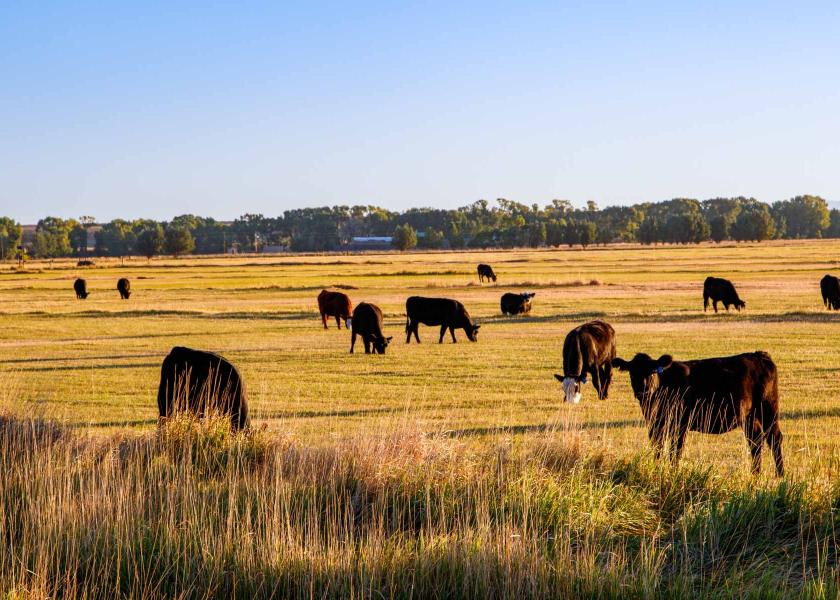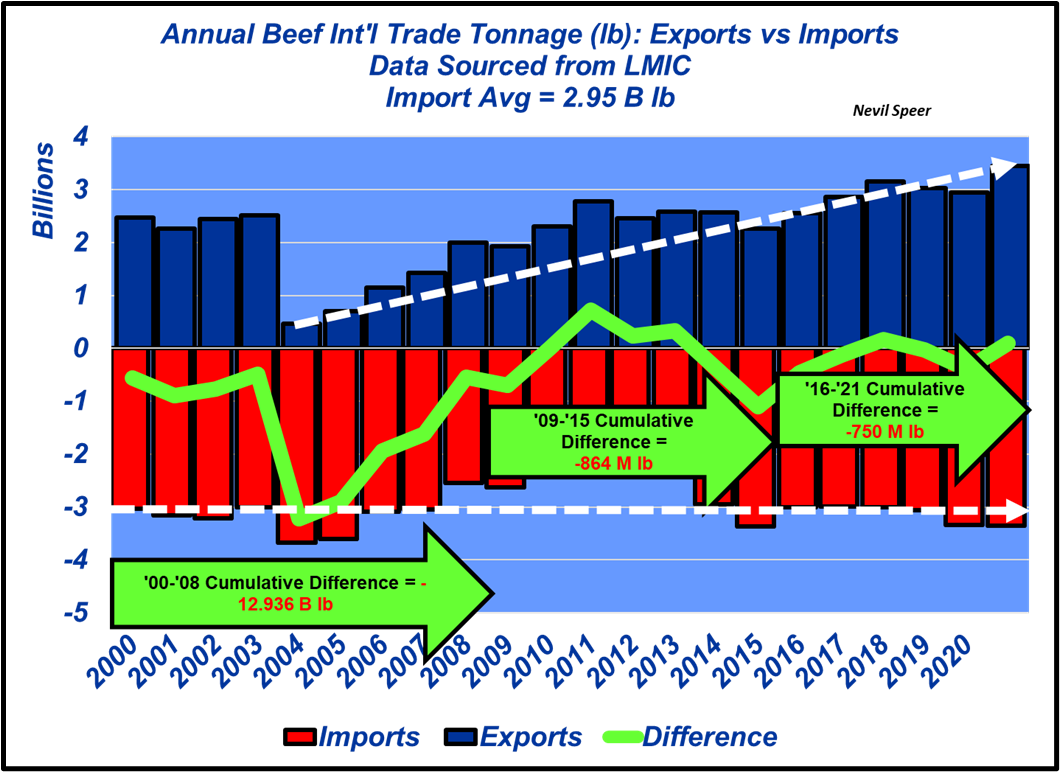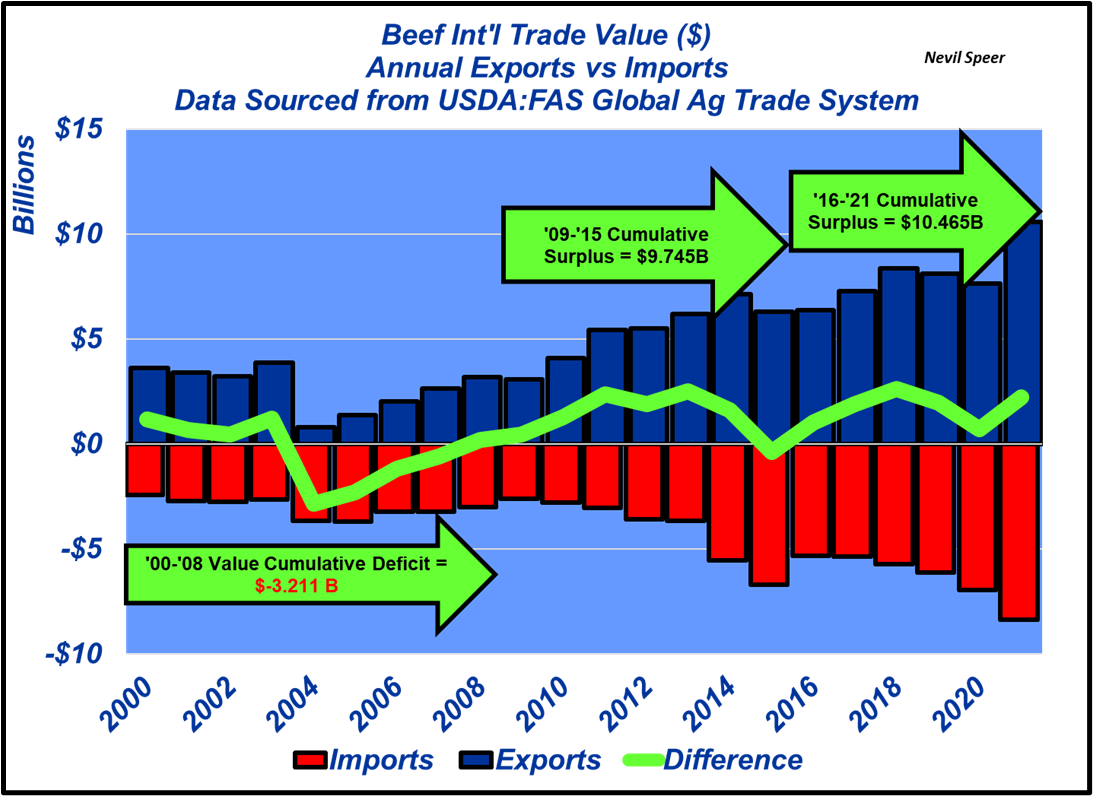Speer: International Trade Integral To Economic Freedom

International trade is an especially prickly issue for the beef industry. The various strands often get twisted together and can be difficult to unravel. That’s best illustrated by an email I received from a reader responding to my recent column:
"We are a fourth generation ranching family from Central Montana and we strongly support COOL. We have sent attachments of the recent surge in cheap beef imports. We believe your figures are low in regards[sic] to total beef imports. I don't think that you take into account all the beef that comes in as live cattle. Canada has many slaughter cattle and fed cattle that hits our market and the packers use these cattle to work our prices down."
So, let’s sort through some of this.
The Montana rancher shared with me recent summary data from ERS. His data was correct: beef imports in the first quarter of 2022 totaled nearly 985 million pounds – compared to just 696 million pounds in 2021. That represents a whopping 42% increase year-over-year.
However, the comparison is somewhat misleading. Food service trade was decimated by Covid; initial job losses represented nearly 1/3 of the country’s total unemployment shock. Restaurant closures meant plunging demand for ground beef (more below), so beef imports lagged during the last quarter of ’20 and the first quarter of ’21. Therefore, the year-over-year difference is a Covid-driven anomaly.
Now, let’s unwind this more broadly, addressing both imports AND exports while also considering both tonnage AND value. The two graphs that follow outline annual trade balance (exports vs. imports) from both perspectives (quantity and value). There are several items of importance.
First, tonnage:
- The cumulative difference between imports and exports during the past six years is only 750M lb – that’s just an extra 125 M lb/year in net beef supply (vastly different from what’s often portrayed).
- Note, too, COOL failed to slow down beef imports.
- Last, import volume has been relatively steady during the past 20 years – versus beef exports, which have consistently grown and established a new record in 2021 at nearly 3.45B lb.
Second, and vastly more important, value:
- Beef export value outpaced imports by nearly $1.75B/year during the past six years.
- Following BSE, it wasn’t until 2009 that the beef industry’s trade balance returned to positive territory. However, since that time, all the work that has gone into establishing international markets has paid great dividends.
None of this, though, really addresses the precision of trade: Dr. Derrell Peel states it best (emphasis mine):
"Although global beef trade is summarized in terms of total quantities, it is important to recognize that beef consists of many different products and most beef exports and imports are specific products moving between specific destinations for specific uses. Trade in beef products helps balance both the overall quantity of beef and the preferred mix of beef products in various markets. Beef trade adds value for both exporters and importers and increases the total value of the global beef industry."
It's the preferred mix that really matters! For instance, a vast majority of “cheap beef imports” are comprised of lean trimmings that are blended with 50-50 trim to make ground beef. Without these lean trimmings, much of the fed market’s domestic trim would have little value.
Precision IS the driver. Imports and exports create value and provide opportunity for all trading partners, thereby underpinning the very reason international trade exists in the first place. But all else aside, what’s most important is the overarching principle of a free market, and the fact that international trade is integral to economic freedom.


Nevil Speer is an independent consultant based in Bowling Green, KY. The views and opinions expressed herein do not reflect, nor are associated with in any manner, any client or business relationship. He can be reached at nevil.speer@turkeytrack.biz.







